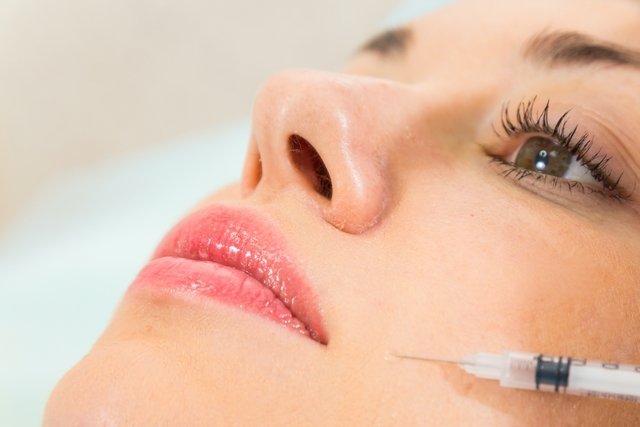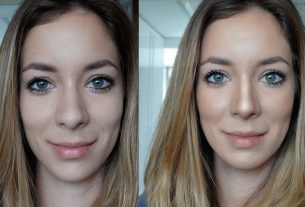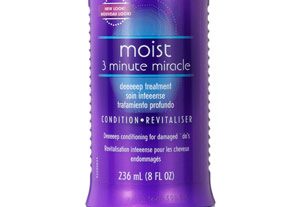PMMA, or polymethyl methacrylate, is a plastic substance in the form of microspheres that is normally indicated to correct small deformities or loss of facial fat in people with HIV. not being recommended by the Brazilian Society of Plastic Surgery for aesthetic treatments.
This substance allows the affected skin region to be corrected permanently, as it is not reabsorbed by the body, like hyaluronic acid or collagen, for example.
The application of PMMA should be discussed with a doctor, as it is a treatment that has several risks, which can cause complications such as infection or allergies, and is not recommended for use on large areas of the body such as the buttocks or legs, for example.

What is it for
PMMA is indicated to correct small deformities or loss of facial fat in people with HIV infection, and should only be applied by a dermatologist or plastic surgeon.
The application of PMMA not recommended for aesthetic purposesdue to the risk of complications.
Furthermore, PMMA should not be used on large areas of the body, such as the buttocks or calves, for example, as it is a plastic substance that, when used in large quantities or deeper into the skin, can cause serious complications, such as hardening or even necrosis.which is the death of tissue in the applied region.
Make an appointment with the dermatologist in the region closest to you:
Taking care of your health has never been easier!
How PMMA is applied
PMMA is applied to a small region through injections into the subcutaneous tissue, into deeper layers of the skin, filling the volume and correcting small skin deformities.
PMMA injections are usually formulated with lidocaine, a type of anesthetic to reduce pain during injection, and bovine collagen, a protein that is absorbed into the skin within a few days of injection.
However, PMMA is not absorbed by the body, allowing for permanent and lasting correction of deformities, and results can be noticed after 1 or 2 months of treatment.
It is recommended that a PMMA allergy skin test be carried out 4 weeks before first use, as the bovine collagen in the PMMA formula can cause allergies.
Possible risks
PMMA can cause redness or swelling of the skin in the area where it was applied, which generally improves within 24 hours, or bruising that disappears 3 to 7 days after application.
However, when PMMA is applied in large quantities or injected into muscles, it can cause serious health risks that include:
- Necrosis of the skin or muscles;
- Severe allergic reaction;
- Infection at the application site;
- Chronic inflammation;
- Stiffening or deformity of the region;
- Formation of nodules on the skin;
- Rejection by the body.
Furthermore, the application of PMMA can cause vascular thrombosis, especially when it reaches a blood vessel, causing symptoms of shortness of breath, chest pain, headache, changes in vision or speech, weakness, drowsiness or loss of consciousness and can put a person’s life at risk.
It is important to seek medical help immediately or the nearest emergency room if any of these complications are suspected.
Who shouldn’t use
PMMA should not be used by:
- Children under 18;
- Pregnant or breastfeeding women;
- People who have undergone other aesthetic treatments in the last 6 months;
- People who are receiving ultraviolet light therapy;
- History of allergies or anaphylactic reaction;
- Allergy to lidocaine or other anesthetics, or to bovine collagen;
- People prone to the formation of thick scars;
- People with wounds, infections, pimples or cysts on the skin.
Furthermore, PMMA should not be used for aesthetic purposesin addition to being contraindicated for people who presented allergies when performing the skin test.
It is important to inform the doctor of all medications used regularly as the application of PMMA should also not be done in people who use immunosuppressive medications to treat cancer, inflammatory bowel disease or rheumatoid arthritis.
PMMA should also not be applied to people taking anti-inflammatories, such as acetylsalicylic acid, ibuprofen or diclofenac, for example, as they may increase the risk of bruising or bleeding at the application site.
Bibliography
- FEDERAL COUNCIL OF MEDICINE. CFM CONSULTATION nº 70/12 – CFM OPINION nº 5/13 – Indiscriminate use of polymethylmethacrylate (PMMA). Jan/2013. Available at: <https://sistemas.cfm.org.br/normas/arquivos/pareres/BR/2013/5_2013.pdf>. Accessed on Nov 4, 2022
- BRAZILIAN SOCIETY OF PLASTIC SURGERY (SBCP). Public Note: Polymethylmethacrylate / PMMA. July/2022. Available at: <http://www2.cirurgiaplastica.org.br/wp-content/uploads/2022/07/Nota-Publica-PMMA-01-julho-11hs.pdf>. Accessed on Nov 4, 2022
- ROOMS, Alessandra Grassi; et al. Complications after Polymethylmethacrylate Injections: Report of 32 Cases. Plastic and Reconstructive Surgery. 121. 5; 1811-1820, 2008
- KURIMORI, Kleber Tetsuo; et al. Serious complication of irregular use of PMMA: case report and the current Brazilian situation. Rev. Bras. Cir. Plastic. 34. 1; 156-162, 2019
- OLOVEIRA, Carina Gabriela Andrade; et al. Fat embolism syndrome secondary to the use of polymethyl methacrylate in bioplasty: a systematic review. Rev. Bras. Cir. Plastic. 35. 2; 206-211, 2020
- VARGAS, André Ferrão; AMORIM, Natale Gontijo; PITANGUY, Ivo. Late complications of permanent fillers. Rev. Bras. Cir. Plastic. 24. 1; 71-81, 2009
- HANEKE, Eckart. Polymethyl methacrylate microspheres in collagen. Semin Cutan Med Surg. 23. 4; 227-32, 2004
- GOLDMAN, Alberto; WOLLINA, Uwe. Polymethylmethacrylate-induced nodules of the lips: Clinical presentation and management by intralesional neodymium:YAG laser therapy. Dermatol Ther. 32. 1; e12755, 2019
- BEHSHAD, Ramona. Commentary on Polymethylmethacrylate Collagen Gel-Injectable Dermal Filler for Full Face Atrophic Acne Scar Correction. Dermatol Surg. 45. 12; 1567-1569, 2019

Sign up for our newsletter and stay up to date with exclusive news
that can transform your routine!
Warning: Undefined array key "title" in /home/storelat/public_html/wp-content/plugins/link-whisper-premium/templates/frontend/related-posts.php on line 12
Warning: Undefined array key "title_tag" in /home/storelat/public_html/wp-content/plugins/link-whisper-premium/templates/frontend/related-posts.php on line 13




